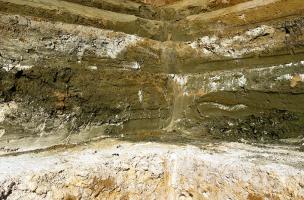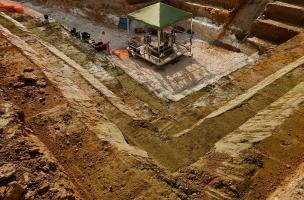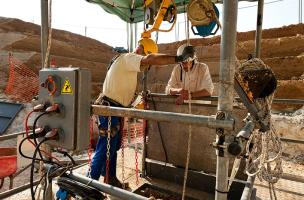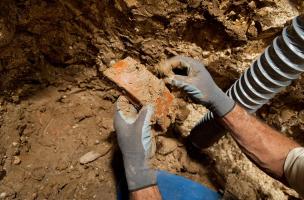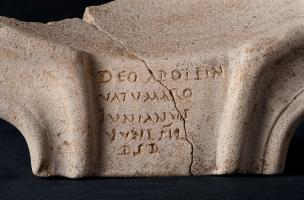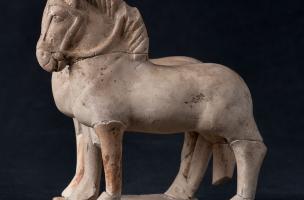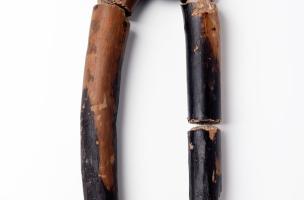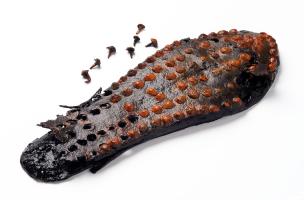You are here
Ex-votos dedicated to Apollo at the bottom of a well in Mesnil-Saint-Nicaise
In the context of archaeological research conducted under the curation of the State (Drac Picardie), in advance of the construction of the canal Seine-Nord Europe, and under the contracting authority of Voies navigables de France, an Inrap team recently discovered a Gallo-Roman sanctuary (fanum) in the districts of Nesle and Mesnil-Saint-Nicaise (Somme).
The excavation of two wells found on the edge of this site revealed a remarkable set of votive objects including exceptional wood sculptures similar to discoveries previously made in Auvergne and Burgundy.
Exceptional ex-votos

The Antique well of Mesnil-Saint-Nicaise contains numerous ceramic objects, including statues of animals (horses, oxen and birds), mother goddesses and a striking protector figure assimilated with the god, Risus, represented in the form of a bald child displaying an unnatural smile. Among the numerous metallic objects, there is an exceptional medal representing Luna, the goddess of the moon.
Apollo in Mesnil-Saint-Nicaise
Do these remarkable discoveries show that this was a sanctuary to water, bringing health and healing? This appears to be the case as the two excavated wells adjoin the Antique temple on the edge of a small valley.
At the bottom of the well, a very particular kind of excavation
Mahaut Tyrrell
Media relations and collaborations
Inrap, direction du développement culturel et de la communication
01 40 08 80 24
mahaut.tyrrell [at] inrap.fr
Elisabeth Justome
Cultural development and communication
Inrap, direction interrégionale Nord-Picardie
03 22 33 40 54
elisabeth.justome [at] inrap.fr


